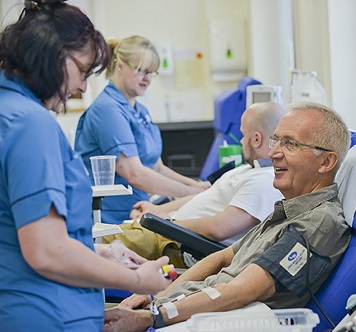Changing with the times
How we are planning for the future of blood donation

Our organisation needs to constantly evolve to keep up with a changing world, in particular the falling demand for blood from hospitals. Hospital requests for blood have been falling by four per cent every year over the past few years and we expect this trend to continue.
Why is demand dropping?
Careful ordering by hospitals – better forecasting and blood management techniques have meant that the blood required by patients is more closely matched to the blood supplied by donors.
Better surgical techniques – simply put, less invasive or ‘keyhole’ surgery causes less blood loss in the operating room.
Do you still need my blood?
Despite the drop in demand, we still need you to donate. We need fewer donations overall, but the fall in demand is not the same across all blood types; in fact, demand is growing for some. Universal blood and platelet types (that is O- and A-) are still very much in demand, and we are particularly keen to attract black donors to help with the rise in patients with sickle cell disease who often require regular transfusions.
We also need to recruit 200,000 new donors this year, to replace the donors who are no longer able to donate.
What will change?
With demand falling, we have to carefully target the way that we collect blood. So we have had to change some donation sessions and ask donors if they can go to a different venue, usually with larger sessions and a longer opening hours.
Overall, with reduced demand, there will obviously be fewer appointments nationally. As we want to closely match what we collect with the exact demand from hospitals, when you are booking an appointment you could see a message that we have reached our target that day for a particular blood type. This doesn’t mean that we don’t need you. Please look for your next convenient session as we are very likely to need you then instead.
Right product, right time, right place,
We are modernising our IT systems as part of our drive to optimise the supply of blood to patients. This complements the more targeted approach we’re taking as improved IT will help us to meet patients’ needs and communicate more effectively with those of you with blood types that are most needed at any particular time.
It is only through your generosity and kindness that we are able to maintain the vital supplies of blood needed by hospital patients and we are so grateful for your continuing support as we adapt to these changes.
In this issue of The Donor magazine...
I just saved my neighbour's life
The incredible response from my city
Taking the organ donation message into the classroom
Scientific review offers chance for more people to give blood
